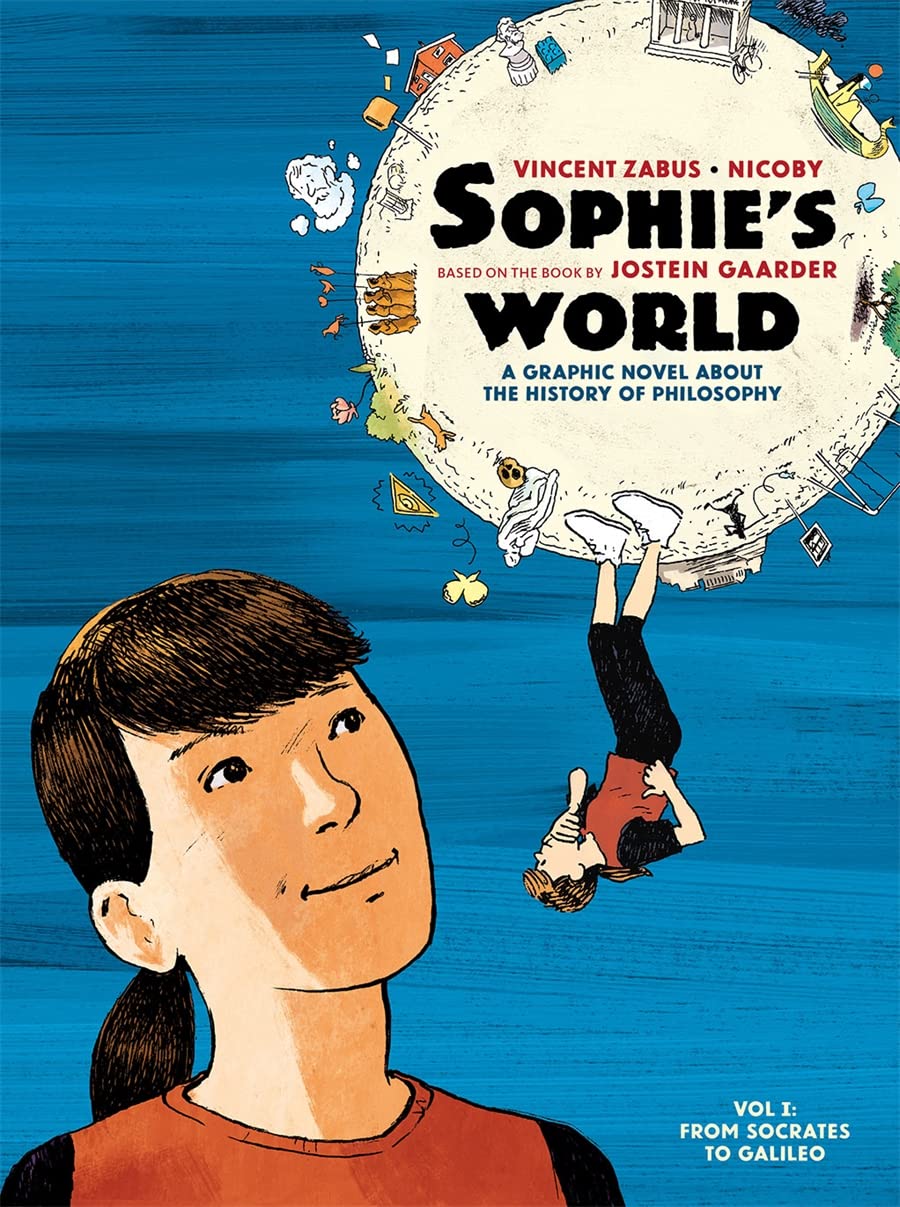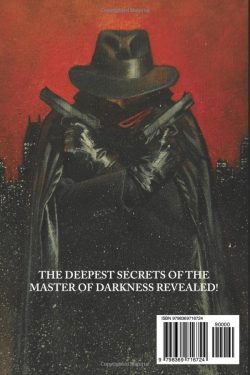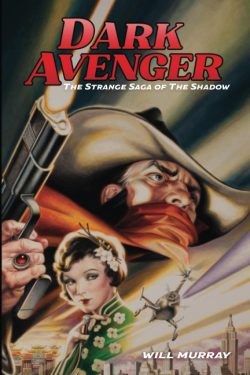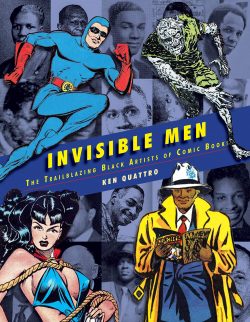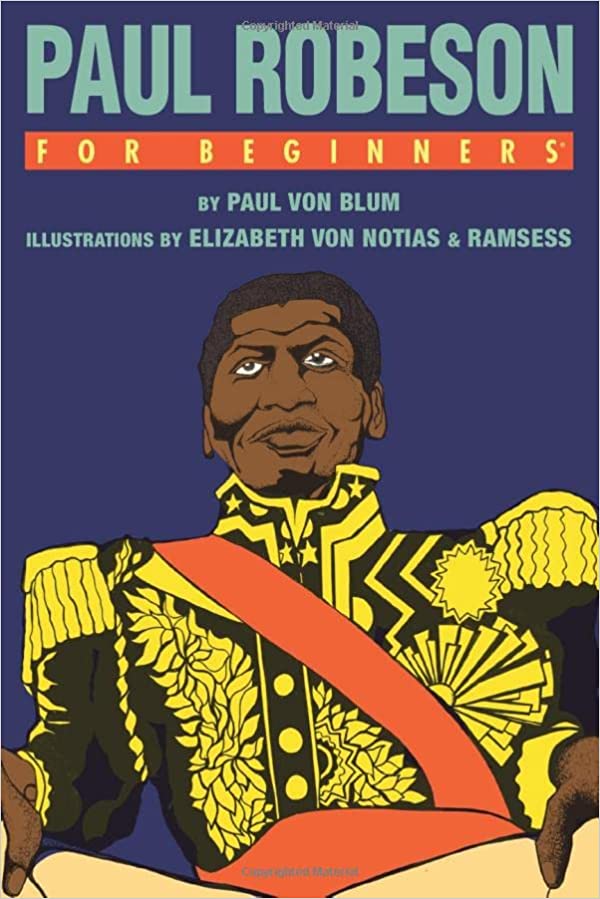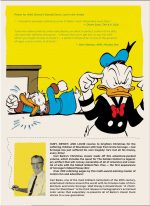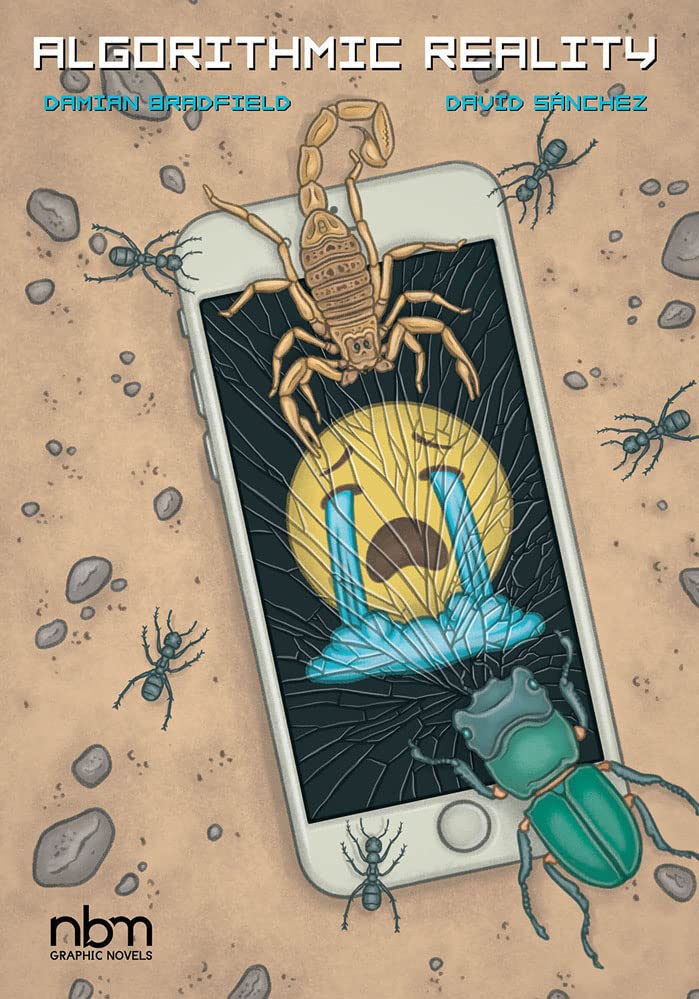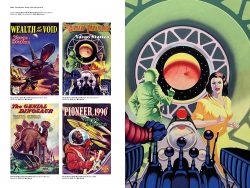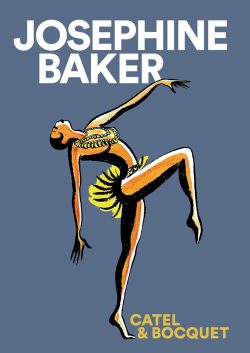

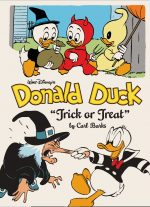
By Carl Barks & various (Fantagraphics Books)
ISBN: 978-1-60699-874-8 (HB/Digital edition)
Win’s Christmas Gift Recommendation: The Utter Acme of All-Ages Entertainment… 10/10
Donald Duck ranks among a small group of fictional characters to have transcended the bounds of reality and become – like Sherlock Holmes, Tarzan, Popeye and James Bond -meta-real. As such, his origins are complex and convoluted. His official birthday is June 9th 1934: a dancing, nautically-themed bit-player in the Silly Symphony cartoon short The Wise Little Hen.
The animated cartoon was adapted by Ted Osborne & Al Taliaferro for the Silly Symphonies Sunday newspaper strip and thus classified by historians as Donald’s official debut in Disney comics. Controversially, he was also reported to have originated in The Adventures of Mickey Mouse strip which began 1931. Thus the Duck has more “birthdays” than he knows what to do with, which presumably explains why he’s such a bad-tempered cuss.
Visually, Donald Fauntleroy Duck was largely the result of animator Dick Lundy’s efforts, and, with partner-in-fun Mickey Mouse, is one of TV Guide’s 50 Greatest Cartoon Characters of All Time. The Duck has his own star on the Hollywood walk of fame and has appeared in more films than any other Disney player.
Throughout the 1930s, his screen career grew from background and supporting roles via a team act with Mickey and Goofy to a series of solo cartoons which began with 1937’s Don Donald. That one also introduced love interest Daisy Duck and the irrepressible nephews Huey, Louie and Dewey…
By 1938 Donald was officially more popular than corporate icon Mickey Mouse, and even more so after his national service as a propaganda warrior in a series of animated morale boosters and information features during WWII. The merely magnificent Der Fuehrer’s Face garnered the 1942 Academy Award for Animated Short Film…
Crucially for our purposes, Donald is also planet Earth’s most-published non-superhero comics character, and has been blessed with some of the greatest writers and illustrators ever to punch a keyboard or pick up a pen or brush. A publishing phenomenon and megastar across Europe – particularly Italy, Germany, the Netherlands, Greece, Sweden, Denmark, Norway, Finland and Iceland – Donald (& Co) have spawned countless original stories and many immortal characters. Sales are stratospheric across all age groups there and in upwards of 45 other countries they export to. Japan’s manga publishers have their own iteration too…
The aforementioned Silly Symphonies adaptation and Mickey strip guest shots were trumped in 1937 when Italian publisher Mondadori launched an 18-page comic book story crafted by Federico Pedrocchi. It was quickly followed by a regular serial in Britain’s Mickey Mouse Weekly (a comic produced under license by Willbank Publications/Odhams Press that ran from 8th February 1936 to 28th December 1957).
Issue #67 (May 15th 1937) premiered Donald and Donna – a prototype Daisy Duck girlfriend – drawn by William A. Ward. Running for 15 weeks, it was followed by Donald and Mac before ultimately settling as Donald Duck – a fixture until the magazine folded. The feature inspired similar Disney-themed publications across Europe, with Donald regularly appearing beside company mascot Mickey…
In the USA, a daily Donald Duck newspaper strip launched on February 2nd 1938, with a colour Sunday strip added in 1939. Writer Ted Karp joined Taliaferro in expanding the duck cast and history: adding a signature automobile, pet dog Bolivar, goofy cousin Gus Goose, grandmother Elvira Coot whilst expanding the roles of both Donna and Daisy…
In 1942, his comic book life began with October cover-dated Dell Four Color Comics Series II #9: AKA Donald Duck Finds Pirate Gold. It was conceived by Homer Brightman & Harry Reeves, scripted by Karp with the illustration by Disney Studios employees Carl Barks & Jack Hannah. That was the moment everything changed…
Carl Barks was born in Merrill, Oregon in 1901, and raised in rural areas of the West during some of the leanest times in American history. He tried his hand at many jobs before settling into the profession that chose him. His early life is well-documented elsewhere if you need detail, but briefly, Barks was a cartoonist, then an animator before quitting the Studio in 1942 to work in the new-fangled field of comic books.
From then until his retirement in the mid-1960s (he officially downed tools in 1966 but was cajoled into scripting stories well into 1968), Barks operated in self-imposed seclusion: writing, drawing and devising a vast array of adventure comedies, gags, yarns and covers that gelled into a Duck Universe of memorable and highly bankable characters like Gladstone Gander (1948), Gyro Gearloose (1952), Magica De Spell (1961) and the nefarious Beagle Boys (1951) to supplement the Studio’s stable of cartoon actors.
His greatest creation was undoubtedly crusty, energetic, paternalistic, money-mad giga-gazillionaire Scrooge McDuck: the World’s wealthiest winged nonagenarian and frequent spur/gadfly and reluctant sugar daddy to the adventuresome youngsters…
Whilst producing all that landmark material Barks was also just a working guy, generating cover art, illustrating other people’s scripts when asked, adding stories to a burgeoning international canon of Duck Lore. Only after Gladstone Publishing began re-packaging Barks material in the 1980s, did he discover the well-earned appreciation he never imagined existed. Media Historian Leonard Maltin called Barks “the most popular and widely read artist/writer in the world”…
So potent were Barks’ creations that they fed back into Disney’s overarching animation output, despite all his brilliant comic work being for Dell/Gold Key and not the studio. The greatest tribute was undoubtedly animated series Duck Tales, based on his classic Uncle Scrooge adventures.
Barks was a fan of wholesome action, unsolved mysteries and epics of exploration, and this led to him perfecting the art and technique of the blockbuster tale: blending wit, history, plucky bravado and sheer wide-eyed wonder into rollicking rollercoaster romps that utterly captivated readers of every age and vintage. Without the Barks expeditions there would never have been an Indiana Jones…
During his working life Barks was utterly unaware that his work – uncredited due to company policy, as was all Disney’s comics output – had been recognised by a rabid and discerning public as “the Good Duck Artist”. When some of his most dedicated fans finally tracked him down, belated celebrity began.
In 2013, Fantagraphics Books began chronologically collecting Barks’ Duck stuff in curated archival volumes, tracing his output year-by-year in hardback tomes and digital editions that finally did justice to the quiet creator. These will eventually comprise the Complete Carl Barks Disney Library. Physical copies are sturdy and luxurious albums – 193 x 260 mm – to grace any bookshelf, with volume 13 here resurrecting works spanning May 1952-November 1953 which includes a wealth of material from a landmark spooky seasonal release…
Everything here is written and drawn by Barks, but these comics inclusions come from a quite distant and very different time, so please be aware that – despite his diligent research and sensitive storytelling – some modern readers might be upset by occasionally outdated depictions and characterisations originally and innocently intended to generate thrills and laughs…
I should also not that the contents are not re-presented in strictly chronological order, but honestly do you really care as long they’re good?
It begins eponymously with ‘Trick or Treat’, which was the lead story in Donald Duck #26. Cover-dated November 1952, it was an unofficial Halloween special that proved quite controversial in its own way.
The story was an adaptation of a current cinema release, and Barks’ faithful interpretation of what was clearly acceptable to moviegoers surprisingly fell foul of his comics editor, who had him cut, excise and redraw much of the saga to make it less scary and more palatable. The full story of the story and its repercussions for the artist are discussed in the text sections of this collection and both Bark’s versions of ‘Trick or Treat’ are re-presented here so readers can judge for themselves…
The tale as Barks intended opens with a witch flying over a spooky old graveyard. Hazel is up for mischief and finds plenty when she teams up with Donald’s nephews who are seeking candied loot in the time-honoured tradition. However, when Donald meanly refuses to play along, it sparks a war of pranks, that escalates into a mystical duel that unleashes a most animated parade of ghosts and terrifying multi-limbed magical monster Smorgasdbord…
From the same issue ‘Hobblin’ Goblins’ sees The Nephews embroiled in inventor Gyro Gearloose’s latest crisis, with his highly dubious “Goblin Foiler” setting them on a catastrophic path of zany stunts to save Halloween whilst all the other kids are having fun with pumpkins and fancy dress, after which ‘A Prank Above’ sees the canny Junior Woodchucks actually outsmarted in their tricking by a crafty antiques dealer…
Barks was as adept with single-image and quick-fire gag vignettes as epic adventures: easily blending humour with drama and charm with action and captivating ideas. This book sees many of his best. At this time, Barks’ main gig was covers and mid-length (10 page) Donald yarns in flagship monthly anthology Walt Disney’s Comics and Stories. The following duck tales come from WDC&S #145 through #158 (October 1952-November 1953): a sequence of rapid fire romps that begin with ‘The Hypno-Gun’, as the Loco parentis confiscates an annoying toy and manages to self-delude himself into a “mesmerised” state. Believing himself tough and forceful, he’s easy prey for Uncle Scrooge, who makes him his bad debt collector…
WDC&S ##146 (November 1952) then reveals the story of scenic town ‘Omelet’ as Donald explains to Daisy how he once dabbled in chicken rearing – with outlandishly catastrophic consequences for the entire area…
This surreal disaster saga was purportedly based on Barks’ own recent attempts to make a little extra cash through some backyard farming, but I doubt similar origins sparked the tale that follows as super-lucky Gladstone Gander becomes an undeserving recipient of a social program run by Daisy. The worst part is that Donald is burdened with helping his smarmy cousin in ‘A Charitable Chore’…
Christmas hit hard in WDC&S 148 (cover-dated January 1953) as ultra-organised Donald sorted everything early only to find he’d forgotten to arrange his own seasonal feast. Determined not to do without he resolves to fool Uncle Scrooge to pay for it in ‘Turkey with All the Schemings’ but has not factored in his opponent’s mean nature and determination to save a penny…
A month later ‘Flip Decision’ saw Donald fall for a flim-flam man’s hokum and begin making every life decision on the basis of a coin-toss, whilst ‘My Lucky Valentine’ follows Donald’s heroic exploits as mailman in a major blizzard. His valiant record is only threatened once he realises his last delivery a romantic missive from Gladstone Gander to Daisy…
Issue #151 celebrated another seasonal highpoint as Donald is shortlisted for Grand Marshal of the forthcoming big parade. With Gladstone as the only other contender much politicking chicanery and bribery ensues but when he shockingly wins ‘The Easter Election’, Donald realises too late that no one can beat his rival’s supernatural fortune…
The May 1953 WDC&S (#152) is a vicious lampoon of gameshows as Donald tries many manic stunts to get on one and make a thousand bucks, even as the Nephews badger, pester and eventually provide a potential solution to his money worries by adopting ‘The Talking Dog’…
A big fishing contest descends into chaos when Donald switches to bait created by Gyro. In ‘Worm Weary’, the entire angling community is outraged and terrified by Don’s powerfully programmed and cooperative wrigglers who dive in and extract all the fish without human intervention, and soon our star is facing a fishy lynch mob…
Working as a realtor, Donald alienates everyone by seeking to sell an old pile currently used by the Nephews as a clubhouse in ‘Much Ado About Quackly Hall’, after which Scrooge adapts the Parable of the Talents to his succession planning and tests Donald, Gladstone and Huey, Dewey & Louie to determine who will eventually inherit and safeguard his money in ‘Some Heir Over the Rainbow’
The Brittle Master series is the name fans use to describe an occasionally-occurring group of stories wherein the perennially self-sabotaging, fiery-tempered and eternally put-upon everyman Duck displayed an astounding excellence in some unique skill, winning the approval and veneration of all and sundry – only to have his own smug hubris bring about ultimate humiliation and downfall.
It began with this tale from Walt Disney Comics & Stories #156 (September 1953) which showed Donald as ‘The Master Rainmaker’: a crop-dusting pilot and cloud-sculpting artiste delivering nigh-magical service to farmers and event-organisers. However, increasingly outrageous requests from his adoring public and his own bellicose nature lead Donald inevitably to disaster when jealousy over Gladstone’s monopoly of Daisy leads to the weather wizard’s accidental creation of a full-blown, devastating ice-storm.
A quirky change of pace came in the October issue where ‘The Money Stairs’ pitted Donald’s youth, fitness and determination against Scrooge’s limitless wealth in an escalating series of physical tasks that seemed too much to believe before #158 (November 1953) pauses the run for now with a manic moment as the boys build an apiary in the backyard that soon shuts down all of Duckburg in ‘Bee Bumbles’…
We end as we began with another strip from that contentious Halloween issue – DD #26 – as Barks successfully recycles a very old gag with Donald trying to scare Daisy in ‘Frightful Face’…
The comics are augmented by a sublime ‘Carl Barks Cover Gallery’ proving the Master’s gift for visual one-liners with a selection of frontages from Four Color (volume II) 394 & 450, Donald Duck #26-30 and Walt Disney Comics & Stories #145-158.
The visual verve over, we move on to validation with ‘Story Notes’ offering context and commentary for each Duck tale here, including the background battle of ‘Trick or Treat’ which is re-visited by Jared Gardner and expanded upon in ‘The Cutting Room Floor’, after which Donald Ault details ‘Carl Barks: Life Among the Ducks’.
‘Contributors’ introduces the commentators Ault, Alberto Beccatini, James Robert Cowles, R, Fiore, Craig Fischer, Gardner, Leonardo Gori, Thad Komorowski, Rich Kreiner, Bill Mason, Stefano Priarone and Francesco “Frank” Stajano and why they’re saying all those nice and informative things. We close as ever with an examination of provenance as ‘Where Did These Duck Stories First Appear?’ clarify the rather byzantine publishing schedules of Dell Comics and the chronology of this collection’s treats. No tricks, honest!
Carl Barks was one of the greatest exponents of comic art the world has ever seen, with almost all his work featuring Disney’s Duck characters: reaching and affecting untold billions across the world. You might be late to the party but don’t be scared: it’s never too late to climb aboard the Barks Express.
Walt Disney’s Donald Duck Trick or Treat © 2015 Disney Enterprises, Inc. All contents © 2015 Disney Enterprises, Inc. unless otherwise noted. All rights reserved.
